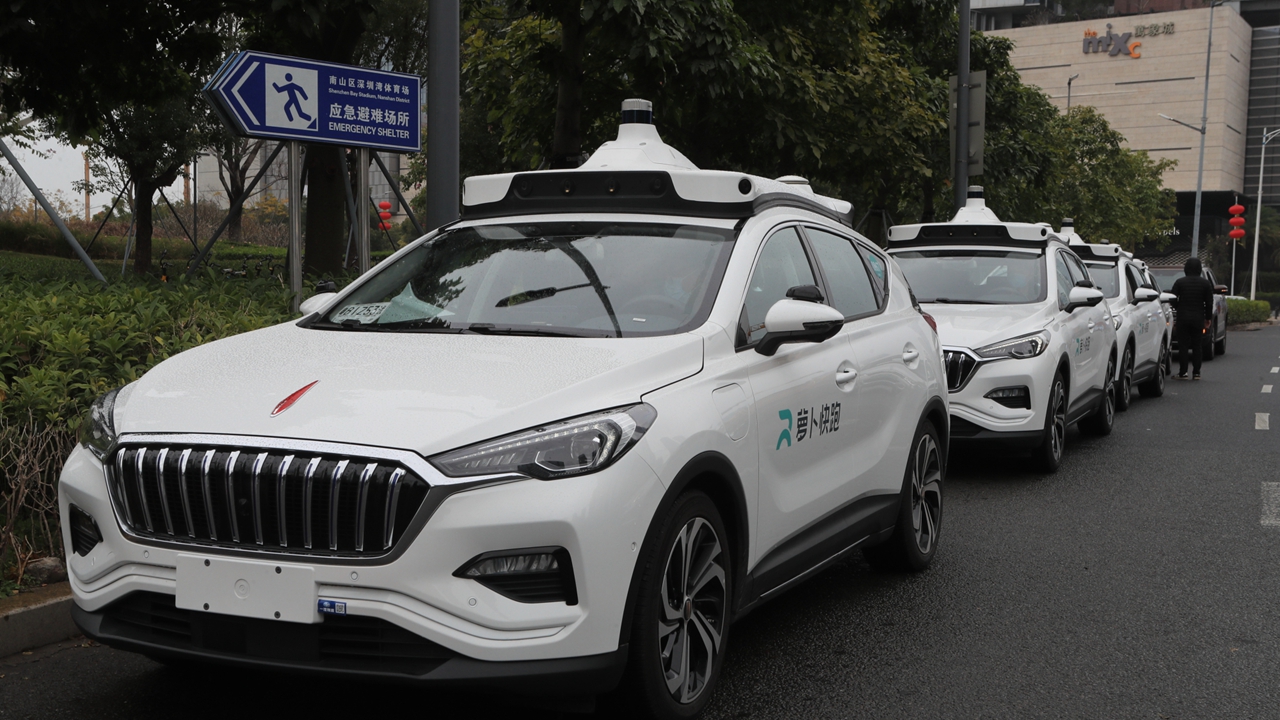
As an innovation capital, Shenzhen is now facilitating the development of the intelligent connected vehicle (ICV) industry, attempting to realize the goal of commercializing “Double 100” vehicles — over 100 driverless cabs and 100 driverless buses will be operating on roads before the end of the year. If the goal is met, Shenzhen will be the first demonstration city for ICVs.
By the end of 2025, the number of driverless vehicles on Shenzhen roads will exceed the 1,000-unit benchmark. The city will become a model of the high-quality development of ICVs in China, as well as a leading city with an ICV industrial cluster, according to the city’s action plan on developing the driverless vehicle industrial cluster (2022-2025).
At the Pingshan Forum of the Global ICV Commercialization Innovation Conference on June 17, the Pingshan District Government issued a notice to a consortium of Pengcheng Electric Group and Apollo Go, Baidu’s autonomous ride-hailing service platform, allowing it to offer Level 4 (L4) autonomous robotaxi services between 7 a.m. and 10 p.m. in its prime locations with 200 stops linking industrial parks, housing compounds, and commercial, cultural and leisure areas.
Pingshan becomes the first district in the city to pilot the commercialization of driverless cab services that residents can access via the Baidu app.
Pingshan, underpinned by BYD, a world leader in new energy vehicle industry, is now the only district with all public roads allowing tests of autonomous vehicles in the Guangdong-Hong Kong-Macao Greater Bay Area (GBA).
Last year, Shenzhen-based self-driving startup AutoX released China’s first large-scale RoboTaxi operation center network. The first batch included 10 large-scale operation centers, which are located in first-tier cities such as Shenzhen, Shanghai, Guangzhou, and Beijing.
The AutoX Pingshan Fully Unmanned Operation Center can navigate fully driverless robotaxis along all public roads spanning 168 square kilometers in Pingshan.
Wider application scenarios
So far, the city has opened 641 kilometers of roads for tests of autonomous vehicles and issued 387 licenses to 14 ICV enterprises to encourage them to develop autonomous driving, according to Xu Wei, deputy chief of the city’s transport bureau.
“Shenzhen now is expanding scenarios for the application of driverless vehicles in public transport, ports and industrial parks, and encourages each district to build demonstration areas for ICVs,” Xu, also director of the ICV high-quality development office, said at the Global ICV Commercialization Innovation Conference.
Legislation for self-driving
“Shenzhen is the first city in China that has passed a law on autonomous driving. It has set up multiple demonstration areas for test of unmanned driving such as Mawan Port for driverless trucks and Pingshan,” Xu said.
The city’s legislature passed a regulation on ICV management last year, allowing licensed platforms to operate autonomous vehicles on designated roads in designated areas starting from Aug. 1, 2022.
According to Xu, the city will open more roads and areas in Bao’an, Qianhai and Nanshan for tests of driverless vehicles. Some sections of the city’s expressways will also be opened for testing.
Lin Tao, chairman of the Shenzhen Urban Transportation Planning and Research Institute, said Shenzhen’s complete industrial chain of new energy vehicles, sound digital city infrastructure and improved legal environment have made Shenzhen one of the cities in China with good prospects for developing autonomous driving.
The added value of Shenzhen’s ICV industry reached 51.1 billion yuan (US$ 7.14 billion) in 2022, up by 46.1% year on year, according to official data.
China has about 4,000 companies connected to the autonomous driving sector, about 20% of which are based in Shenzhen, according to Chinese corporate registration statistics on Tianyancha, a Chinese corporate registry data provider.
